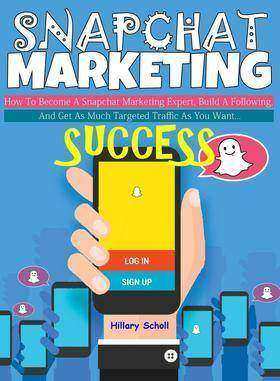
Snapchat Marketing Success
¥23.14
Snapchat ?Marketing ?Success Virtually all social media sites out there have users communicating with text or chat…sure, some social media sites are starting to adopt video and there is some image sharing, but at the core, comments are left and messages are sent. That is NOT the case with Snapchat. Communication is all done through images and videos with the occasional small caption. This is how the younger generation likes to communicate… Short and sweet. Snapchat is one of the most unusual social networks to make it big online. You wouldn’t have thought that such a simple concept, handled arguably quite poorly to begin with, would become the huge behemoth it has today. And yet it has – and right now it’s flying higher than ever thanks to its 2.0 update. Snapchat’s story is surprising enough on face value but when you learn some of the more surprising twists and turns, the plot only thickens. Read on and let’s take a closer look at some of the things you probably didn’t know about Snapchat… ?Snapchat is Highly Personal If you’ve had your ear to the ground, then you may have heard the buzz about live streaming. Live streaming services are quickly becoming incredibly popular thanks to their ability to allow direct and live communication between a brand and its followers. But in fact, Snapchat has been providing something very similar for a long time. Snapchat allows you to update people about your trip to another country, it allows you to invite people to watch the public unveiling of your new product or service and it allows you to share a joke as you’re coming out the shower. This kind of personal communication has the power to create much more engagement, familiarity and trust. And if you look at the big names on Snapchat – like Arnold Schwarzenegger – then you’ll be able to easily see how it can be used to great effect. It Has Incredible Engagement Yes, Snapchat’s ‘instant’ nature gives it the potential to greatly increase engagement. And in reality, that’s exactly what it does. If ever you think you can’t make it big online, let Snapchat be an inspiring story to suggest otherwise. Snapchat is by no means some miracle feat of coding. Rather, this was actually a relatively poorly put together piece of code and would sap huge amounts of battery and CPU power when running in the background even! That’s not to say it’s a bad app – only that it’s all the more impressive it was able to do as well as it did. Facebook Tried to Buy Snapchat When it was enjoying its first major surge in popularity, Snapchat was offered a purchase bid from Facebook worth $3 billion. That’s a huge vote of confidence from the biggest social network on the planet… and Snapchat turned it down! ??Here’s Why You Need To Take A Close Look At Snapchat… ·Although often overlooked, Snapchat is one of the most powerful new social networks for driving traffic online…? ·Snapchatis all about socialization and a great way to interact with your brand? ·Snapchat was recently offered $3 Billion by Facebook… and they turned it down… this makes it clear that Snapchat is sure that it’s only getting bigger and better!? ·Engagement on Snapchat is MASSIVE, and growing… because all communication is focused on image and video sharing, your audience is very attentive and interested in anything you put in front of them…...Snapchat is adding 200 million new active users every single month!
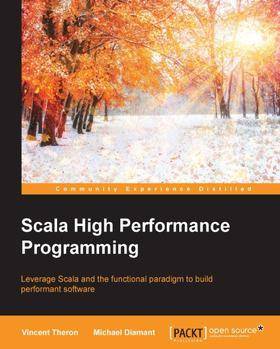
Scala High Performance Programming
¥334.25
Leverage Scala and the functional paradigm to build performant softwareAbout This Book·Get the first book to explore Scala performance techniques in depth!·Real-world inspired use cases illustrate and support the techniques studied and the language features·This book is written by Vincent Theron and Michael Diamant, software engineers with several years of experience in the high-frequency trading and programmatic advertising industriesWho This Book Is ForThis book assumes a basic exposure to the Scala programming language and the Java Virtual Machine. You should be able to read and understand moderately advanced Scala code. No other knowledge is required.What You Will Learn·Analyze the performance of JVM applications by developing JMH benchmarks and profiling with Flight Recorder·Discover use cases and performance tradeoffs of Scala language features, and eager and lazy collections·Explore event sourcing to improve performance while working with stream processing pipelines·Dive into asynchronous programming to extract performance on multicore systems using Scala Future and Scalaz Task·Design distributed systems with conflict-free replicated data types (CRDTs) to take advantage of eventual consistency without synchronization·Understand the impact of queues on system performance and apply the Free monad to build systems robust to high levels of throughputIn DetailScala is a statically and strongly typed language that blends functional and object-oriented paradigms. It has experienced growing popularity as an appealing and pragmatic choice to write production-ready software in the functional paradigm. Scala and the functional programming paradigm enable you to solve problems with less code and lower maintenance costs than the alternatives. However, these gains can come at the cost of performance if you are not careful.Scala High Performance Programming arms you with the knowledge you need to create performant Scala applications. Starting with the basics of understanding how to define performance, we explore Scala's language features and functional programming techniques while keeping a close eye on performance throughout all the topics.We introduce you as the newest software engineer at a fictitious financial trading company, named MV Trading. As you learn new techniques and approaches to reduce latency and improve throughput, you'll apply them to MV Trading's business problems. By the end of the book, you will be well prepared to write production-ready, performant Scala software using the functional paradigm to solve real-world problems.Style and approachThis step-by-step guide will help you create high performance applications using Scala. Packed with lots of code samples, tips and tricks, every topic is explained in a detailed, easy-to-understand manner.

Mastering Akka
¥371.39
Master the art of creating scalable, concurrent, and reactive applications using AkkaAbout This Book·This book will help you cure anemic models with domain-driven design·We cover major Akka programming concepts such as concurrency, scalability, and reactivity·You will learn concepts like Event Sourcing and CQRS via Akka Persistence, Akka Streams, Akka Http as well as Akka ClusteringWho This Book Is ForIf you want to use the Lightbend platform to create highly performant reactive applications, then this book is for you. If you are a Scala developer looking for techniques to use all features of the new Akka release and want to incorporate these solutions in your current or new projects, then this book is for you. Expert Java developers who want to build scalable, concurrent, and reactive application will find this book helpful.What You Will Learn·Use Akka actors to enable parallel execution·Build out domain-driven design based components like entities and aggregates·Respond to command requests on that aggregate root that affect the internal state·Leverage Akka Persistence, protobuf and Cassandra to save the persistent state of you entities·Build out complex processing graphs with the Graph Builder DSL·Understand the dynamic push/pull nature of backpressure handling within Akka Streams·Route HTTP requests to an actor and return a response·Deploy actor instances across a set of nodes via ConductR for high availabilityIn DetailFor a programmer, writing multi-threaded applications is critical as it is important to break large tasks into smaller ones and run them simultaneously. Akka is a distributed computing toolkit that uses the abstraction of the Actor model, enabling developers to build correct, concurrent, and distributed applications using Java and Scala with ease. The book begins with a quick introduction that simplifies concurrent programming with actors. We then proceed to master all aspects of domain-driven design. We'll teach you how to scale out with Akka Remoting/Clustering. Finally, we introduce Conductr as a means to deploy to and manage microservices across a cluster.Style and approachThis comprehensive, fast-paced guide is packed with several real-world use cases that will help you understand concepts, issues, and resolutions while using Akka to create highly performant, scalable, and concurrency-proof reactive applications.
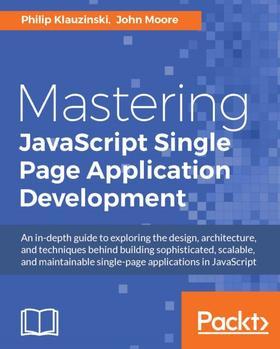
Mastering JavaScript Single Page Application Development
¥334.25
An in-depth guide to exploring the design, architecture, and techniques behind building sophisticated, scalable, and maintainable single-page applications in JavaScriptAbout This Book·Build large-scale, feature-complete SPAs by leveraging widely used tools and techniques.·Gain a solid understanding of architecture and SPA design to build applications using the library or framework of your choice.·Explore the various facets of SPA development to build web apps that are fast, scalable, and easy to test.Who This Book Is ForThis book is ideal for JavaScript developers who want to build complex single-page applications in JavaScript. Some basic understanding of SPA concepts will be helpful but not essential.What You Will Learn·Organize your development environment using the command line with NPM, Bower, and Grunt.·Choose an accurate design pattern for your app·Understand modular JavaScript programming and Node.js·Interact with a REST API using JavaScript and AJAX with practical examples·Build a single page application using the MEAN stack·Connect your app across popular social media platforms such as Facebook, Twitter, and LinkedIn·Test your app, both on the server side and in views·Prepare your app for the real world and deploy it to HerokuIn DetailSingle-page web applications—or SPAs, as they are commonly referred to—are quickly becoming the de facto standard for web app development. The fact that a major part of the app runs inside a single web page makes it very interesting and appealing. Also, the accelerated growth of browser capabilities is pushing us closer to the day when all apps will run entirely in the browser.This book will take your JavaScript development skills to the next level by teaching you to create a single-page application within a full-stack JavaScript environment. Using only JavaScript, you can go from being a front-end developer to a full-stack application developer with relative ease.You will learn to cross the boundary from front-end development to server-side development through the use of JavaScript on both ends. Use your existing knowledge of JavaScript by learning to manage a JSON document data store with MongoDB, writing a JavaScript powered REST API with Node.js and Express, and designing a front-end powered by AngularJS.This book will teach you to leverage the MEAN stack to do everything from document database design, routing REST web API requests, data-binding within views, and adding authentication and security to building a full-fledged, complex, single-page web application.In addition to building a full-stack JavaScript app, you will learn to test it with JavaScript-powered testing tools such as Mocha, Karma, and Jasmine. Finally, you will learn about deployment and scaling so that you can launch your own apps into the real world.Style and approachFollowing a structured approach, this book helps readers gain expertise in SPA development. Its thorough coverage of SPA architecture and design, along with practical use cases, provides readers with a clear path to building applications with the library of their choice. For readers who are afraid to take the plunge straightaway, the book also offers step-by-step guidance on developing a complex web app.
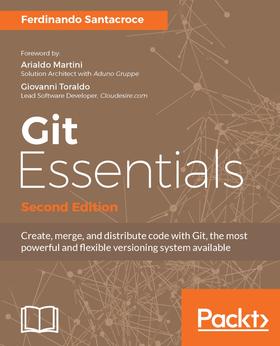
Git Essentials - Second Edition
¥259.95
Dive and explore into the latest addons of the latest Git.About This Book·Master all the basic concepts of Git to protect your code and make it easier to evolve·Use Git proficiently, and learn how to resolve day-by-day challenges easily·This step-by-step guide is packed with examples to help you learn and work with Git's internalsWho This Book Is ForIf you are a software developer with little or no experience of versioning systems, or you are familiar with other centralized versioning systems, then this book is for you.If you have experience in server and system management and need to broaden your use of Git from a DevOps perspective, this book contains everything you need.What You Will Learn·Master Git fundamentals·Be able to "visualize," even with the help of a valid GUI tool·Write principal commands in a shell·Figure out the right strategy to run change your daily work with few or no annoyances·Explore the tools used to migrate to Git from the Subversion versioning system without losing your development history·Plan new projects and repositories with ease, using online services, or local network resourcesIn DetailSince its inception, Git has attracted skilled developers due to its robust, powerful, and reliable features. Its incredibly fast branching ability transformed a piece of code from a niche tool for Linux Kernel developers into a mainstream distributed versioning system. Like most powerful tools, Git can be hard to approach since it has a lot of commands, subcommands, and options that easily confuse newcomers.The 2nd edition of this very successful book will help you overcome this fear and become adept in all the basic tasks in Git. Building upon the success of the first book, we start with a brief step-by-step installation guide; after this, you'll delve into the essentials of Git. For those of you who have bought the first edition, this time we go into internals in far greater depth, talking less about theory and using much more practical examples.The book serves as a primer for topics to follow, such as branching and merging, creating and managing a GitHub personal repository, and fork and pull requests. You'll then learn the art of cherry-picking, taking only the commits you want, followed by Git blame. Finally, we'll see how to interoperate with a Subversion server, covering the concepts and commands needed to convert an SVN repository into a Git repository.To conclude, this is a collection of resources, links, and appendices to satisfy even the most curious.Style and approachThis short guide will help you understand the concepts and fundamentals of GIT is a step-by-step manner.
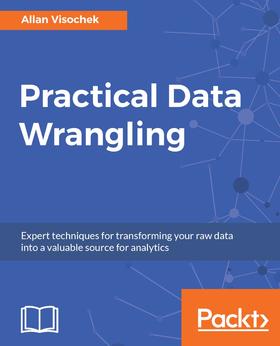
Practical Data Wrangling
¥222.81
Turn your noisy data into relevant, insight-ready information by leveraging the data wrangling techniques in Python and RAbout This Book·This easy-to-follow guide takes you through every step of the data wrangling process in the best possible way·Work with different types of datasets, and reshape the layout of your data to make it easier for analysis·Get simple examples and real-life data wrangling solutions for data pre-processingWho This Book Is ForIf you are a data scientist, data analyst, or a statistician who wants to learn how to wrangle your data for analysis in the best possible manner, this book is for you. As this book covers both R and Python, some understanding of them will be beneficial.What You Will Learn·Read a csv file into python and R, and print out some statistics on the data·Gain knowledge of the data formats and programming structures involved in retrieving API data·Make effective use of regular expressions in the data wrangling process·Explore the tools and packages available to prepare numerical data for analysis·Find out how to have better control over manipulating the structure of the data·Create a dexterity to programmatically read, audit, correct, and shape data·Write and complete programs to take in, format, and output data setsIn DetailAround 80% of time in data analysis is spent on cleaning and preparing data for analysis. This is, however, an important task, and is a prerequisite to the rest of the data analysis workflow, including visualization, analysis and reporting. Python and R are considered a popular choice of tool for data analysis, and have packages that can be best used to manipulate different kinds of data, as per your requirements. This book will show you the different data wrangling techniques, and how you can leverage the power of Python and R packages to implement them.You'll start by understanding the data wrangling process and get a solid foundation to work with different types of data. You'll work with different data structures and acquire and parse data from various locations. You'll also see how to reshape the layout of data and manipulate, summarize, and join data sets. Finally, we conclude with a quick primer on accessing and processing data from databases, conducting data exploration, and storing and retrieving data quickly using databases.The book includes practical examples on each of these points using simple and real-world data sets to give you an easier understanding. By the end of the book, you'll have a thorough understanding of all the data wrangling concepts and how to implement them in the best possible way.Style and approachThis is a practical book on data wrangling designed to give you an insight into the practical application of data wrangling. It takes you through complex concepts and tasks in an accessible way, featuring information on a wide range of data wrangling techniques with Python and R
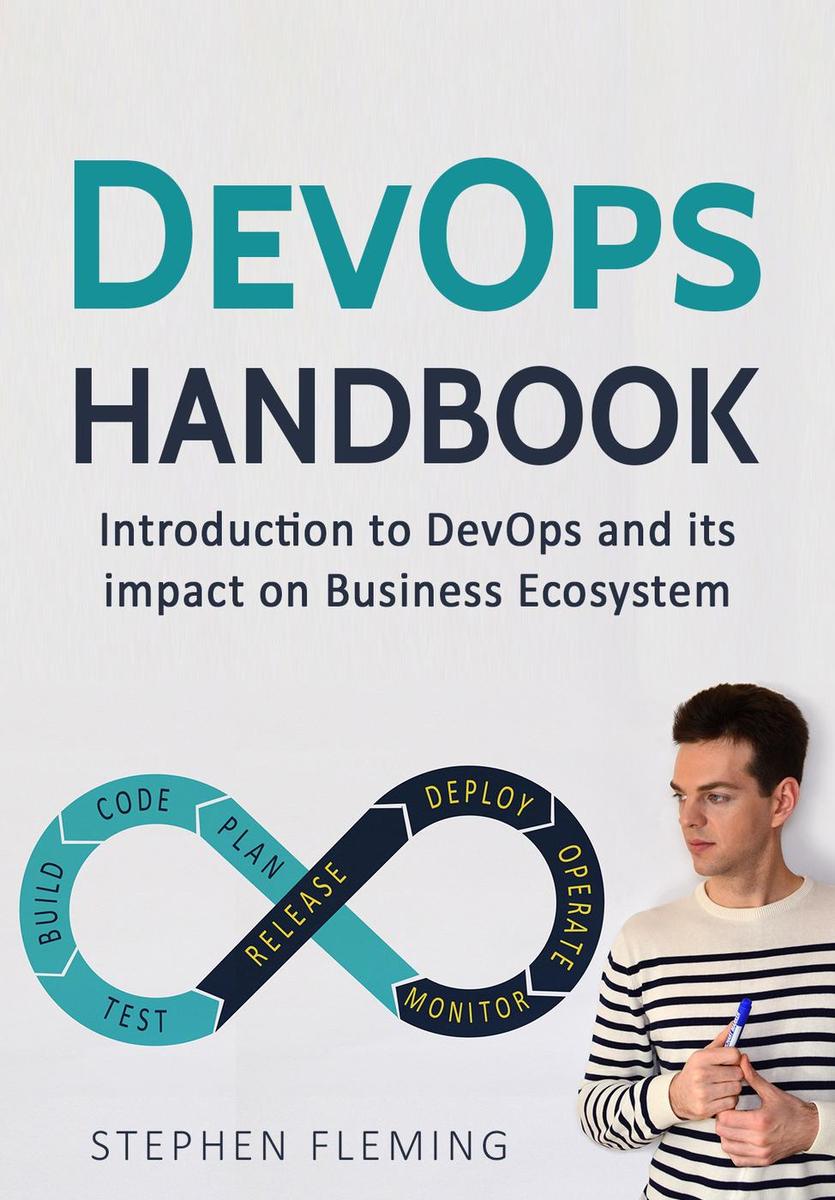
DevOps:Introduction to DevOps and its impact on Business Ecosystem
¥32.62
“It is not the strongest of the species that survive, nor the most intelligent, but the one most responsive to change.”-?Charles Darwin As the industry is moving towards maximum digitization there is a consensus that DevOps practices help you deliver software faster, more reliable, and with fewer errors. DevOps is set of practices and cultural values that have been proven to help organizations of all sizes improve their software release cycles, software quality, security, and ability to get rapid feedback on product development. This book is aimed at Consultant, Project Manager and people from techno-commercial profiles who would be explaining the benefits of DevOps to the client, internal leadership or project teams. As the crux of DevOps methodology lies in the cultural transformation of the organization, people who are stakeholders in shaping this change must understand the overall alignment of business goals with this methodology. You would get to explore: ·What is DevOps·Relationship between Agile, Scrum, Kanban and DevOps·DevOps Adoption:? Organizational cultural Change·DevOps Ecosystem·Emerging Trends·DevOps success stories In the Bonus Booklet you will find out: ·DevOps Job Market overview·Insights into DevOps job application·People to follow on twitter “Grab your copy today along with Bonus DevOps Booklet”
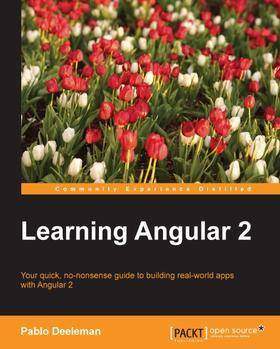
Learning Angular 2
¥297.10
Your quick, no-nonsense guide to building real-world apps with Angular 2About This Book·The first and best overview of Angular 2 on the market—this guide gathers together everything there is to know about Angular 2 and groups it into intuitive sections.·This book is your detailed map of every feature and its use cases.·The author has done all the hard work of fitting everything Angular 2 means for developers together for you, making this book the quickest way to learn Angular 2 from scratch.Who This Book Is ForThis book is targeted at web developers who want to build the next generation of state-of-the-art mobile and desktop web applications with Angular 2. This book does not require you to have prior exposure to either Angular 1.x or 2, although comprehensive knowledge of JavaScript is assumed. It's great for newcomers to Angular who learn best through clear explanations and definitions of concepts.What You Will Learn·Set up your working environment in order to have all the tools you need to start building Angular 2 components with minimum effort·Get up to speed with TypeScript, a powerful typed superset of JavaScript that compiles to plain JavaScript·Take full control of how your data is rendered and updated upon data changes·Build powerful web applications based on structured component hierarchies that emit and listen to events and data changes throughout the elements tree·Explore how to consume external APIs and data services and allow data editing by harnessing the power of web forms made with Angular 2·Deliver seamless web navigation experiences with application routing and state handling common features with ease·Discover how to bulletproof your applications by introducing smart unit testing techniques and debugging toolsIn DetailAngular 2 was conceived as a complete rewrite in order to fulfill the expectations of modern developers who demand blazing fast performance and responsiveness from their web applications.This book will help you learn the basics of how to design and build Angular 2 components right from the beginning, providing full coverage of the TypeScript syntax required to follow the examples included. From that point on, we will build upon our first components, interconnect them, and give shape to larger web applications. We will then move to implementing routing in Angular 2, analyzing how to handle application states, and navigating from one component to another in depth. After this, the book features full coverage of web forms and user input validation, later leveraging all of this information to go through the basics of implementing user authentication in Angular 2 and providing a bird's eye view of the different strategies at hand to secure pages and areas of your website. Animating components and DOM elements with Angular 2 is also covered in this book. The final part of this book provides broad insights into how to unit test components and other modules such as services, directives, routes or pipes.Style and approachThis book covers everything there is to know about getting well-acquainted with Angular without bogging you down. Everything is neatly laid out under clear headings for quick consultation, offering you the information required to understand a concept immediately, with short relevant examples of each feature.
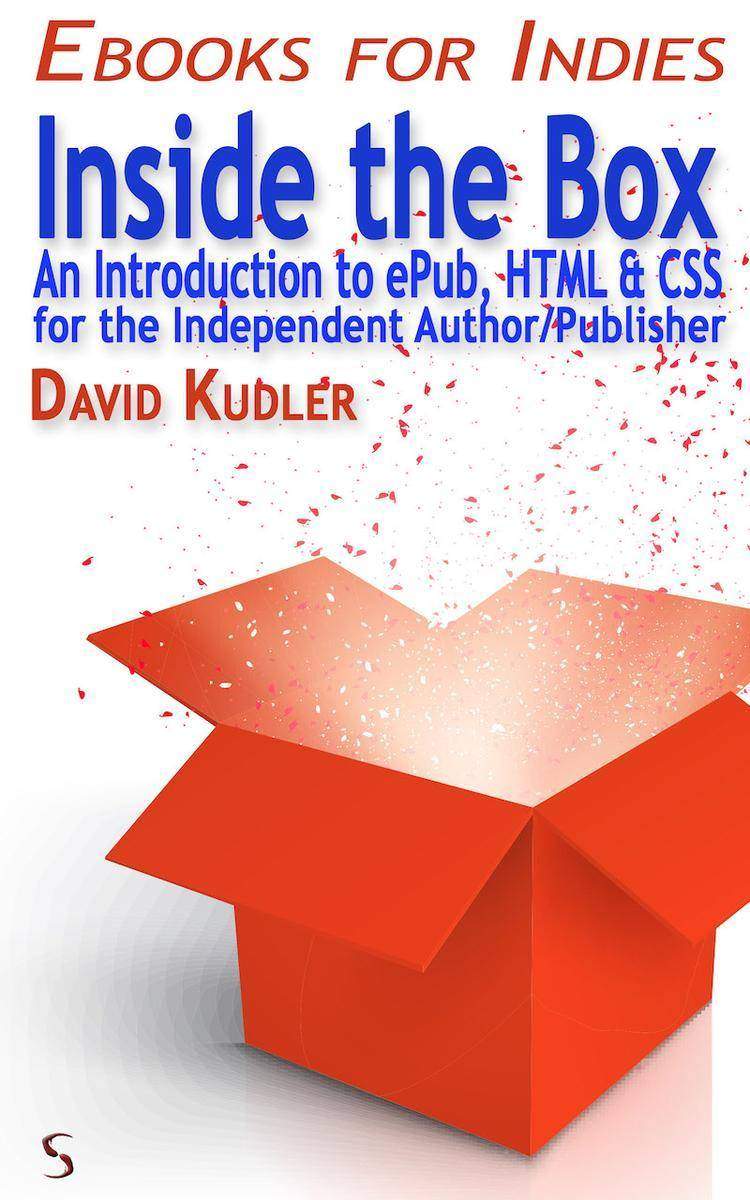
Inside the Box: An Introduction to ePub, HTML & CSS for the Independent Author/P
¥24.44
An ebook is just a website in a boxBut what’s inside the box?In this clear, concise guide, ebook designer and indie author David Kudler folds back the lid of ePub, the universal ebook format. He introduces you to the nuts and bolts that make an ebook work. Includes overviews of the ePub format and internal structure as well as basic guides to the HTML and CSS (Cascading Style Sheets) that you need to know to make your ebooks look professional.(Self-Publishing & Ebook Creation)David Kudler is an independent publisher and author. He has been designing ebooks since 2010. He blogs about ebook creation, publishing, and marketing on Huffington Post, Stillpoint Digital Press, and The Book Designer.
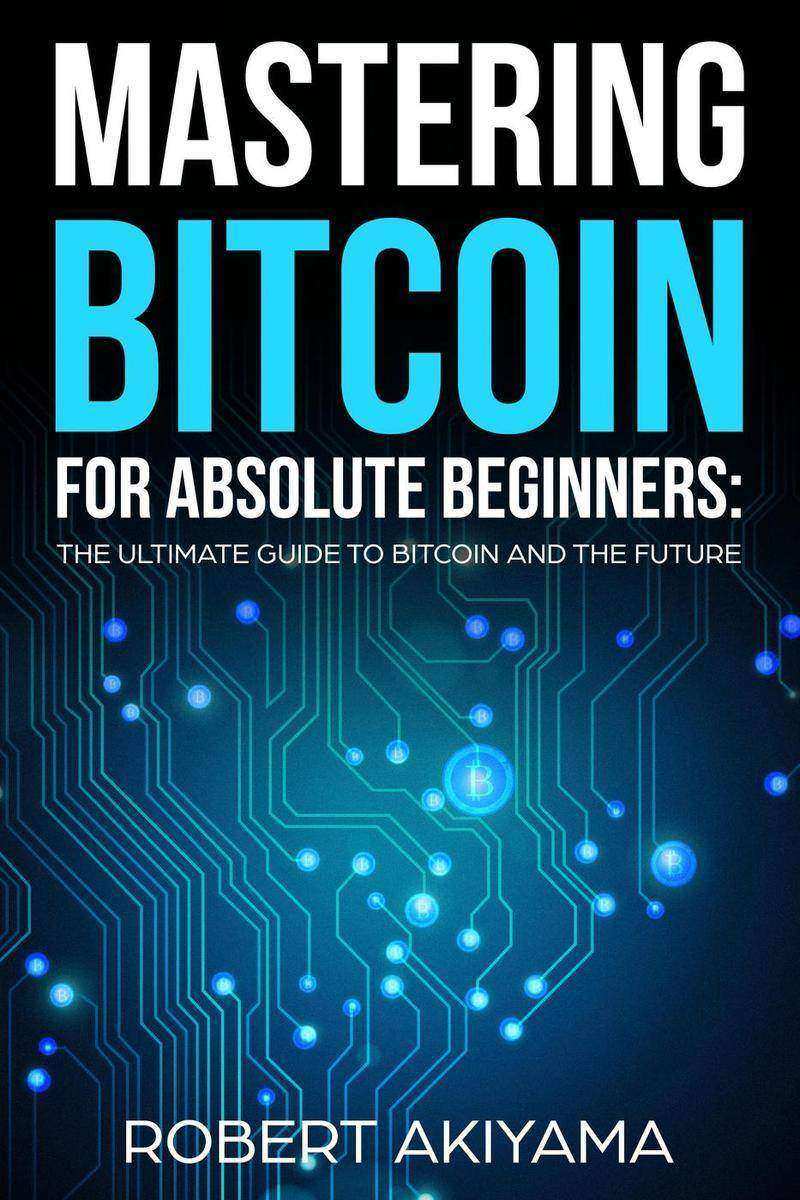
Mastering Bitcoin For Absolute Beginners: The Ultimate Guide To Bitcoin And The
¥32.62
☆★☆The Ultimate ?Guide To The World of Bitcoin ?Technology is here! ☆★☆ This book will teach you the history, fundamentals, and real world applications of bitcoin cryptocurrency ?Tired of being cheated by the current system of ?central banking? They are like rouge intermediaries with absolute control and hold all the power and can print money on a whim. How much longer can we allow this dysfunctional system of currency exchange to exist? ?This is the digital age and this new wave of currency will impact the lives of millions and even billions worldwide! ?Meaning ?no more scandals from third party intermediaries who can print money out of thin air! No more centralized banks! But a unified and decentralized system that is transparent, distributed, and validated among EVERYONE. If ?you are wondering how can all this be possible? Than it is strongly recommended you grab your copy now and learn everything you need to know about bitcoin, whether you want to invest or understand the convoluted concepts of cyptocurrency in the most easy to read and detailed step by step guide in plain English! What You'll Learn ?Benefits of Bitcoin ?History of Bitcoin Real World Application ?Blockchain technology ?How mining works ?Estimating Trends ?Worldwide Influence On ?Laws, Policies and Regulations For Bitcoin ?And, much,much more! Not enough? Ok, well there's more... This book also includes bonus chapters and diagrams! ?Over 200+ pages of valuable content! ?How Does This Book Differ From The Rest? ?This book is truly set apart from the rest and is vastly superior. There's an entire section dedicated to blockchain technology as understanding the fundamental technology behind bitcoin is as equally as important itself. Unlike other books this book does not skim over any details, but gives you the reader an enhanced experience of in depth information, so you can have a greater understanding of both bitcoin and blockchain technology. What are you waiting for? Grab your copy now and join the next big wave of change and see the future! ?Imagine a world with no more physical currency or central authority figures that control the supply of money.

Secrets Every Author Should Know: Indie Publishing Basics
¥23.14
Frustrated with the plethora of conflicting information on how to self-publish? Wouldn’t it be wonderful to sit down with someone who has already made the mistakes, done the analysis, and will provide you the short cuts—the secrets about the things that work? Now you have that chance with the Career Author Secrets series.Indie Publishing (Self Publishing) has changed dramatically in the past five years. There are now new, easier tools to use for every part of the process—editing, formatting, distribution, sales, and analysis. This first book in the Career Author Secrets series provides a foundation for navigating the indie publishing process and staying away from the scammers. It breaks down the requirements for self-publishing successfully, protecting your rights for the future, and YES I do share all the secrets I’ve learned. It contains everything a DIY author needs to get her book from manuscript to professional publication in both ebook and print, including: Why books don’t sell Options for DIY or contracting professionals The truth about ISBNs & Copyright Registration Secrets for formatting your book the easy way Creating book covers that sell Making decisions about distribution This book is especially valuable for those with limited technical skills who want to produce a quality professional book for the least amount of cost. Learn the secrets to easier implementation and how to make good decisions on what is worth your time and money.
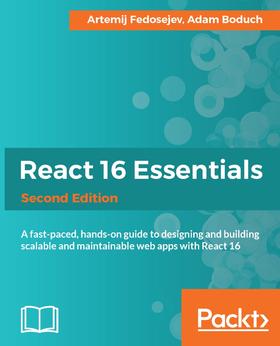
React 16 Essentials - Second Edition
¥222.81
Everything you need to start working with React 16 and assess React FiberAbout This Book·Hands-on examples and tutorials for the latest React 16 release·Assess the impact of React Fiber for your future web development·Build maintainable and high performance React 16 web applicationsWho This Book Is ForIf you're a frontend developer with some knowledge of native JavaScript development and frontend frameworks, wishing to learn the fastest web user interface library there is, then this book is ideal for you.What You Will Learn·Learn to code React 16 with hands-on examples and clear tutorials·Install powerful React 16 tools to make development much more efficient·Understand the impact of React Fiber today and the future of your web development·Utilize the Redux application architecture with your React components·Create React 16 elements with properties and children·Get started with stateless and stateful React components·Use JSX to speed up your React 16 development process·Add reactivity to your React 16 components with lifecycle methods·Test your React 16 components with the Jest test frameworkIn DetailReact 16 Essentials, Second Edition, fully updated for React 16, takes you on a fast-paced journey through building your own maintainable React 16 applications. React experts Artemij Fedosejev and Adam Boduch give you all the essentials you need to know and start working with React 16, in this new edition of the best-selling React.js Essentials title. You'll find the latest React 16 code updates, assessment of React Fiber, new coverage of Redux, and how to work as a modern React developer.The authors offer you their current assessment of React Fiber, and you'll soon be exploring React 16 hands on, creating your own single and multiple user interface elements with React 16. You'll then see how to create stateless and stateful components and make them reactive. You'll also learn to interact between your components and lifecycle methods, and gauge how to effectively integrate your user interface components with other JavaScript libraries. Delve deep into the core elements of the Redux architecture and learn how to manage your application and data persistence. Then go the extra mile with the Jest test framework, and run multiple tests on your applications and find solutions to scale without complexity.Today React is used by Facebook, Instagram, Khan Academy, and Imperial College London, to name a few. Many new users recognize the benefits of React and adopt it in their own projects, forming a fast-growing community. The speed at which React has evolved promises a bright future for anyone who invests in learning it today. Let Artemij and Adam bring you a brand new look at React 16 and React Fiber, and move your web development into the future.Style and approachReact 16 Essentials, Second Edition, will take you on a fast-paced, hands-on journey through building your own maintainable React 16 applications.

Mastering Hibernate
¥222.81
Learn how to correctly utilize the most popular Object-Relational Mapping tool for your Enterprise applicationAbout This Book·Understand the internals of Hibernate and its architecture, and how it manages Entities, Events, Versioning, Filters, and Cache·Observe how Hibernate bridges the gap between object-oriented concepts and relational models·Discover how Hibernate can address architectural concerns such as Transaction, Database Multi-tenancy, Clustering, and Database ShardsWho This Book Is ForMastering Hibernate is intended for those who are already using or considering using Hibernate as the solution to address the problem of Object Relational Mapping. If you are already using Hibernate, this book will help you understand the internals and become a power user of Hibernate.What You Will Learn·Understand the internals of a Hibernate session and how Entities are managed·Declare better mapping between entity classes and database tables·Manage entity associations and collections·Fetch data not just by entity ID, but also using HQL, Criteria Objects, Filters, and Native SQL·Observe the first and second level caches and find out how to manage them·Collect statistics and metrics data for further observation·Make your application work with multi-tenant databasesIn DetailHibernate has been so successful since its inception that it even influenced the Java Enterprise Edition specification in that the Java Persistence API was dramatically changed to do it the Hibernate way. Hibernate is the tool that solves the complex problem of Object Relational Mapping. It can be used in both Java Enterprise applications as well as .Net applications. Additionally, it can be used for both SQL and NoSQL data stores.Some developers learn the basics of Hibernate and hit the ground quickly. But when demands go beyond the basics, they take a reactive approach instead of learning the fundamentals and core concepts. However, the secret to success for any good developer is knowing and understanding the tools at your disposal. It's time to learn about your tool to use it betterThis book first explores the internals of Hibernate by discussing what occurs inside a Hibernate session and how Entities are managed. Then, we cover core topics such as mapping, querying, caching, and we demonstrate how to use a wide range of very useful annotations.Additionally, you will learn how to create event listeners or interceptors utilizing the improved architecture in the latest version of Hibernate.Style and approachThis book takes a close look at the core topics, and helps you understand the complex topics by showing you examples and giving you in-depth discussions.

Secrets to Pricing and Distribution: Ebook, Print and Direct Sales
¥30.88
Once you have a finished book, you need to get it into readers’ hands. Loading your book to a vendor looks deceivingly easy. However, the career author knows that each vendor has its own methods for promoting books, performing searches, and identifying ready buyers. You need to take advantage of these differences in order to maximize your profits and discoverability. Capitalize on competitive retail pricing in different markets, and use effective metadata to draw more readers to your books. Learn to: Write compelling book blurbs for each title that focus on “reader cookies” and marketing. Unlock keywords and get access to hidden category options. Take advantage of search algorithm nuances at Amazon, Barnes and Noble, Kobo, and Apple. Use aggregators to increase distribution opportunities around the world. Evaluate opportunities for direct sales to bookstores and individual consumers.
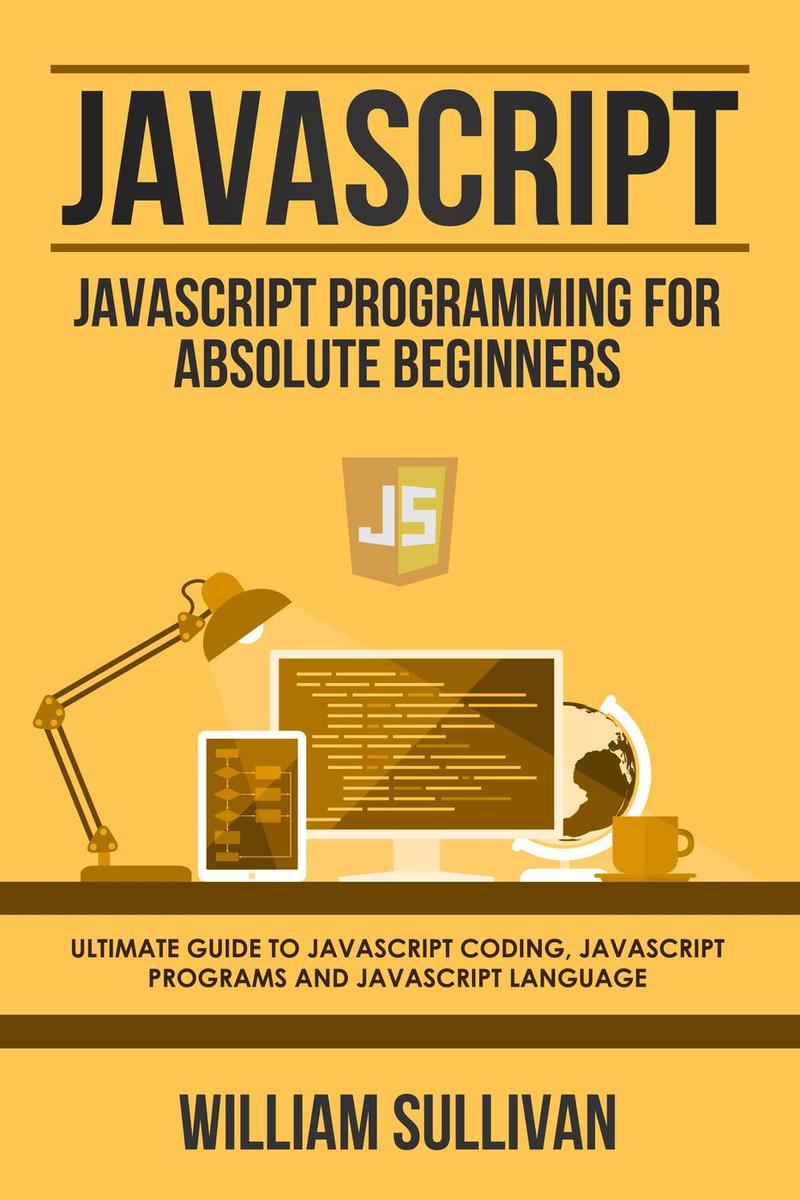
Javascript: Javascript Programming For Absolute Beginners
¥32.62
☆★☆ Javascript: Javascript Programming For Absolute Beginners☆★☆ The best starter guide for javascript!The fundamentals of javascript are often missed, however, this book's primary focus and emphasis is learning the essentials and to build from the ground up.? What You'lll Learn The history of JavaScript and its uses Setting Up Your Environment The Vital Basics of HTML and CSS Statements, Comments & Variables How to properly use jQuery String Operators JavaScript Array Methods Loops and Iteration How To Use Functions And much, much more! ? Within this book you will learn various mechanisms of javascript programming: variables, conditional statements, and why learning these core principles lead to success.Once you gain knowledge of the fundamental building blocks of javascript you will gain confidence to tackle more complex topics down the road.Programming books can easily retail for 100s of dollars, why not start with an expert you can trust and for an affordable price?The immense value of this book cannot be understated, and this is a once in a life time opportunity for you to take advantage of and invest in yourself by empowering yourself with the right tools and knowledge for success.What are you waiting for?Includes: 21 practice questions! Note* For best visual experience of diagrams it is highly recommend you purchases the paperback version for best image quality.☆★☆ Grab your copy now!☆★☆
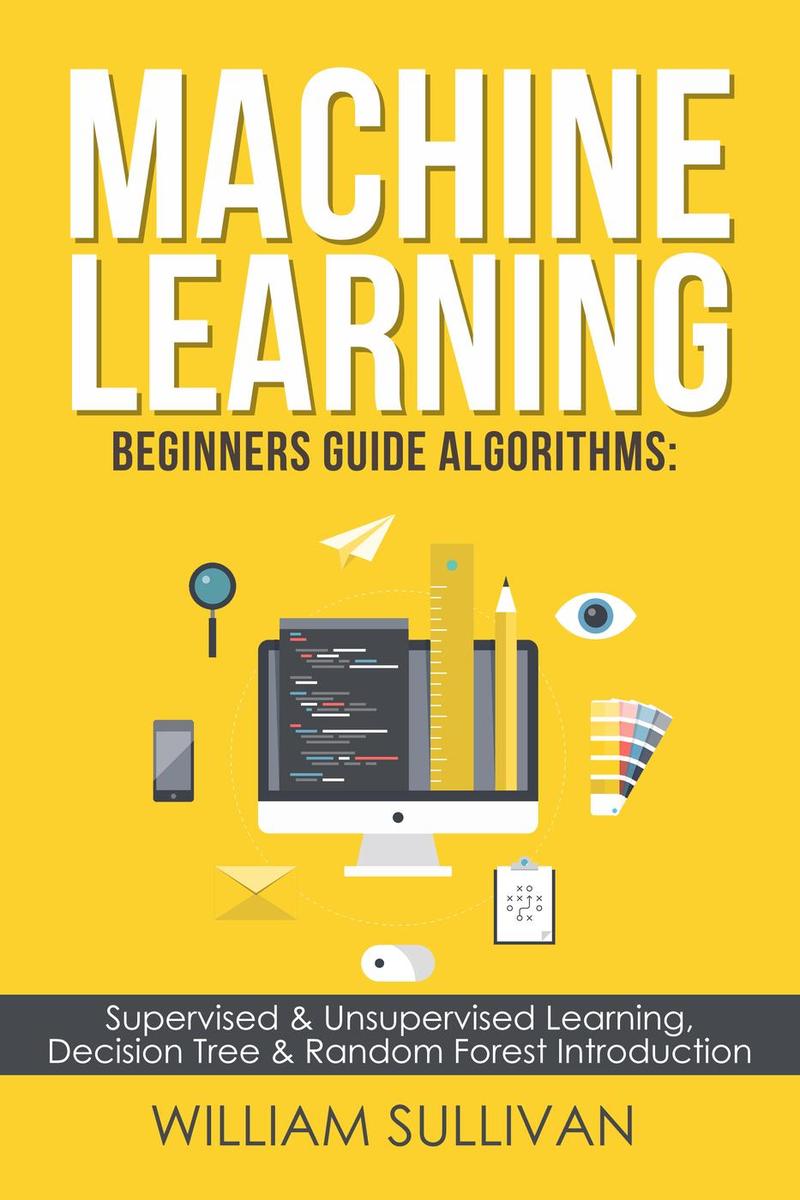
Machine Learning For Beginners Guide Algorithms
¥32.62
Machines can LEARN ?!?! Machine learning occurs primarily through the use of " algorithms" and other elaborate procedures Whether you're a novice, intermediate or expert this book will teach you all the ins, outs and everything you need to know about machine learning Note: Bonus chapters included inside! Instead of spending hundreds or even thousands of dollars on courses/materials why not read this book instead? Its a worthwhile read and the most valuable investment you can make for yourself Other books easily retail for $50-$100+ and have far less quality content. This book is by far superior and exceeds any other book available for beginners. What You'll Learn Supervised Learning Unsupervised Learning Reinforced Learning Algorithms Decision Tree Random Forest Neural Networks Python Deep Learning And much, much more! This is the most comprehensive and easy to read step by step guide in machine learning that exists. Learn from one of the most reliable programmers alive and expert in the field You do not want to miss out on this incredible offer!

Secrets to Effective Author Marketing: It’s More Than “Buy My Book”
¥46.36
Have you put your book out there and been disappointed in your sales? Perhaps you’ve tried a variety of marketing tactics to boost discoverability: blog posts, social media, book tours, paid ads in a variety of venues. But nothing is working. The publishing landscape changes every year. The number of books published has increased and the competition for readers is more than it has been before. The key is to?define your audience and then convince those potential readers of the?value?of your book. Your marketing time and money should primarily be spent on a message of value–not price, not story, and not genre. This book provides specific techniques to exploit that value without resorting to the typical overexposure in social media and newsletters with “Buy My Book” sales messaging. Instead, focus on the top three proven techniques that actually sell books. Follow step-by-step instructions and timelines to learn how to: 1) Create an Effective Plan for Communicating to Readers; 2) Use Social Media and Email lists to Engage with Your Readers; and 3) Plan for Effective Campaigns for both Book Launches and Backlist Rejuvenation throughout the year. In addition this book provides techniques to: Distinguish specific groups of readers most likely to buy your novel or nonfiction book. Understand your competition and the advantages that your book offers. Clarify hooks that capture attention of the media, reviewers, and readers. Identify where and how to reach readers, reviewers, and media. Create and implement a consistent brand throughout all marketing efforts. Effectively select, from 100+ options, the appropriate marketing tactics and timing that matches your book intentions and values. Maximize organic reach and stay to a budget of less than $100 per book campaign. Develop a long-term online marketing plan.
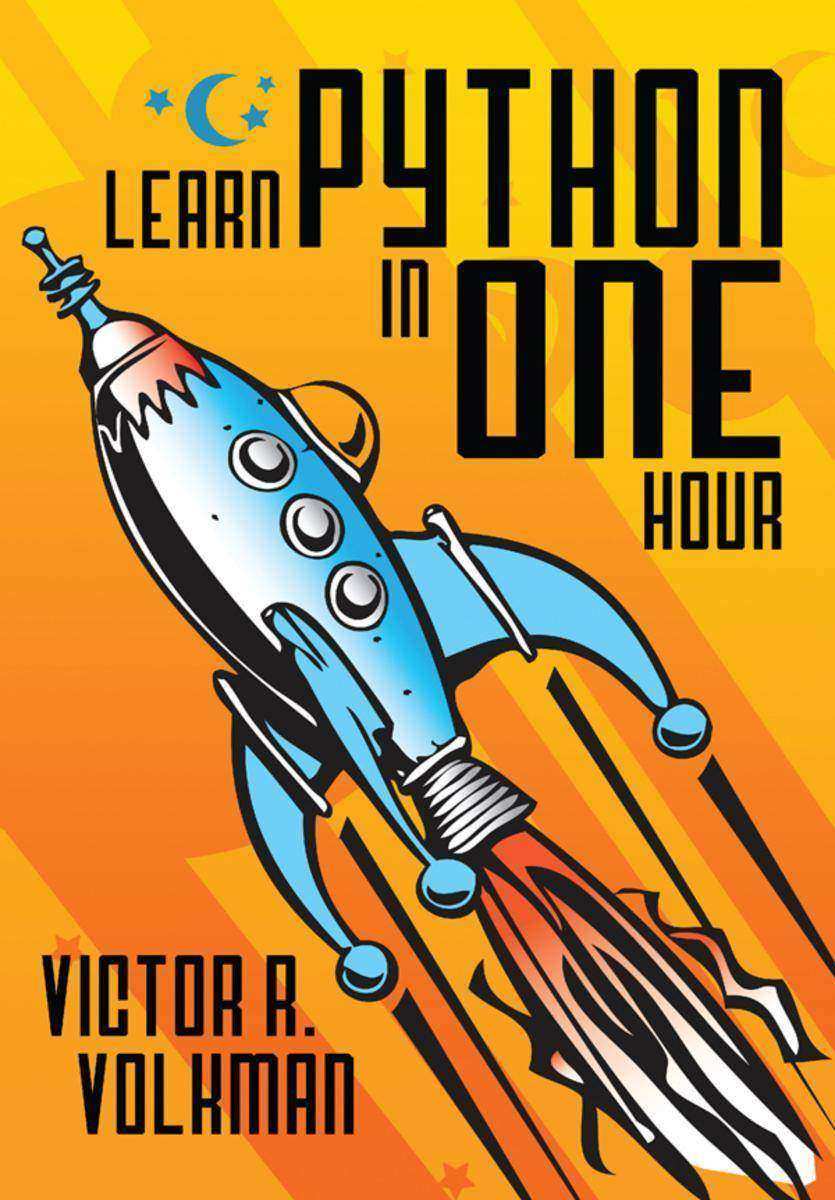
Learn Python in One Hour:Programming by Example
¥40.79
You're already a smart person, you don't need a 1000+ page book to get you started on the web's fastest growing programming platform. Instead, Learn Python in One Hour delivers on the promise of code literacy while saving your most precious commodity - time itself. Volkman's innovative programming-by-example approach means you focus on usage, not mindless detail. Based on the author's sold-out live seminars, you'll see Python's flexible coding technique in action as we refactor from script to procedural to object-oriented during actual problem solving. In a seven-lesson progression, you'll be exposed to this and more: Basic file input and output operations Exception handling with try/except Using functions to compute and return multiple values Basic elements of a class definition and how to call methods Lists, dictionaries, sets, and other collections Iteration through collections, files, sorted sets Converting lists to strings and vice-versa Six most common Python pitfalls Take the One Hour challenge and see if you too can pick up 90% of syntax and semantics in less time than you probably spend commuting each day.About the Author Victor R. Volkman graduated cum laude from Michigan Technological University with a BS in Computer Science in 1986. Since then, he has written for numerous publications, including The C Gazette, C++ Users Journal, Windows Developers Journal, and many others. He has taught college-level programming courses at Washtenaw Community College and has served on its Computer Information Science (CIS) Faculty Advisory Board for more than a decade. Volkman says Python helped him "rediscover the joy of programming again." www.volkman.org From Modern Software Press
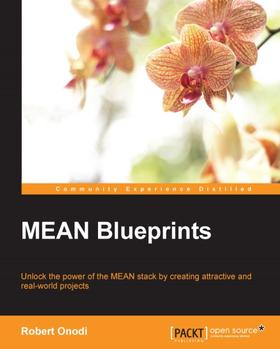
MEAN Blueprints
¥334.25
Unlock the power of the MEAN stack by creating attractive and real-world projectsAbout This Book·Build six optimum end-to-end web applications using the M.E.A.N stack·Follow the advanced Angular.js 2 application structure to build more scalable and maintainable apps·Integrate an authorization system into your application and reuse existing code from projectsWho This Book Is ForIf you are a web developer with a basic understanding of the MEAN stack, experience in developing applications with JavaScript, and basic experience with NoSQL databases, then this book is for you.What You Will Learn·Build modern, end-to-end web applications by employing the full stack web development solution of MEAN·Learn NoSQL databases and separate the client logic from the server code·Build a complex application from start to finish and work with monetary data in MongoDB·Handle a multi-user type system and authorize your users to access control list·Implement a chat application from scratch using Socket.IO·Create distributed applications and use the power of server-side rendering in your applications·Extend a project with a real-time bidding system using WebSocketsIn DetailThe MEAN stack is a combination of the most popular web development frameworks available—MongoDB, Angular, Express, and Node.js used together to offer a powerful and comprehensive full stack web development solution. It is the modern day web dev alternative to the old LAMP stack. It works by allowing AngularJS to handle the front end, and selecting Mongo, Express, and Node to handle the back-end development, which makes increasing sense to forward-thinking web developers. The MEAN stack is great if you want to prototype complex web applications.This book will enable you to build a better foundation for your AngularJS apps. Each chapter covers a complete, single, advanced end-to-end project. You'll learn how to build complex real-life applications with the MEAN stack and few more advanced projects. You will become familiar with WebSockets and build real-time web applications, as well as create auto-destructing entities. Later, we will combine server-side rendering techniques with a single page application approach. You'll build a fun project and see how to work with monetary data in Mongo. You will also find out how to a build real-time e-commerce application.By the end of this book, you will be a lot more confident in developing real-time, complex web applications using the MEAN stack.Style and approachThis book is filled with independent hands-on projects that teach you how to build real-life end-to-end complex web applications using the MEAN stack.

The Unofficial Guide To iOS 10
¥24.44
The Unofficial Guide To iOS 10
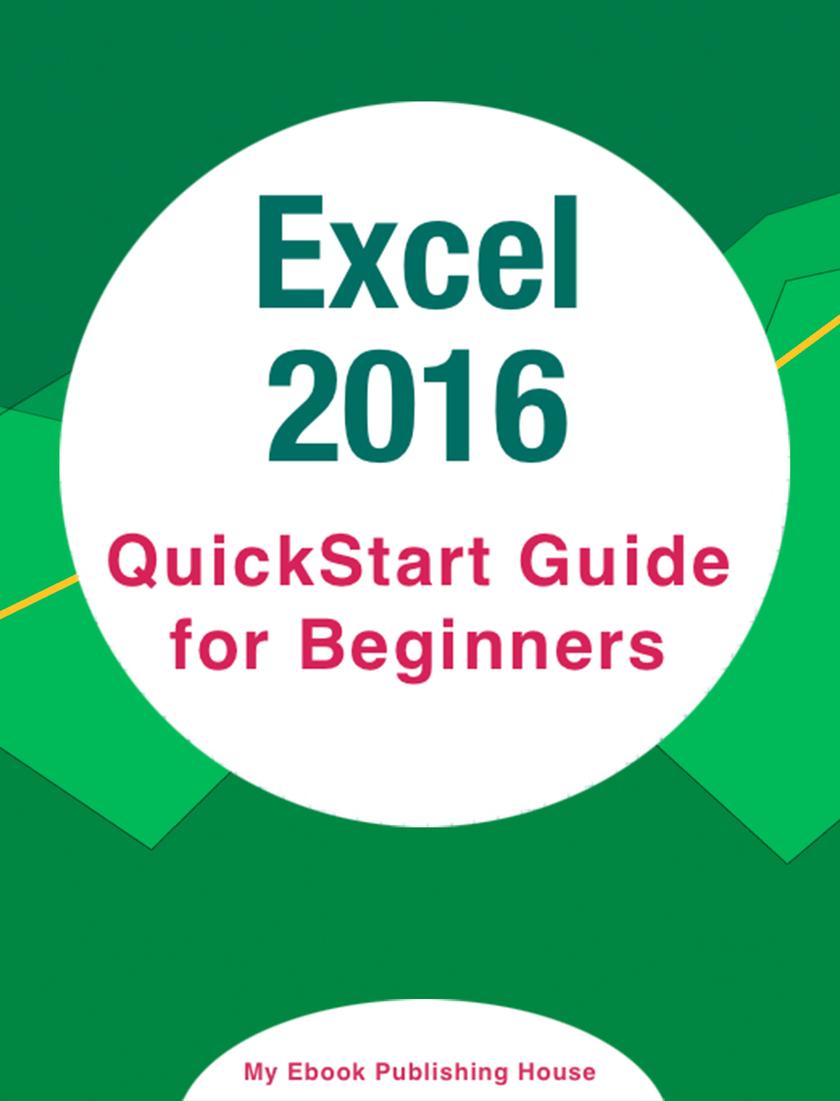
Excel 2016: QuickStart Guide for Beginners
¥24.44
Excel 2016: QuickStart Guide for Beginners




 购物车
购物车 个人中心
个人中心



